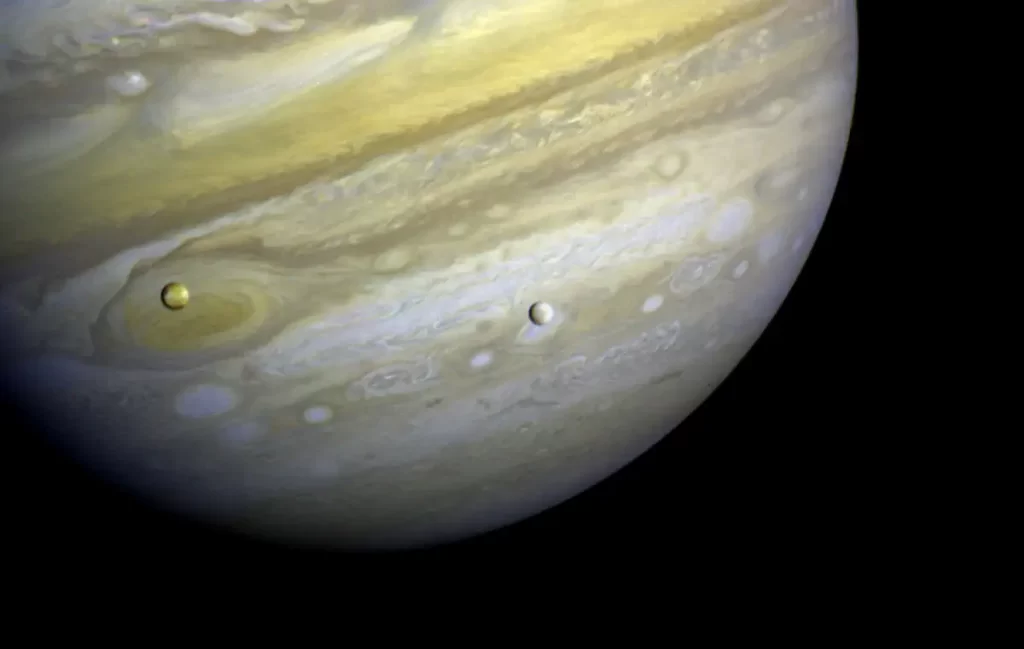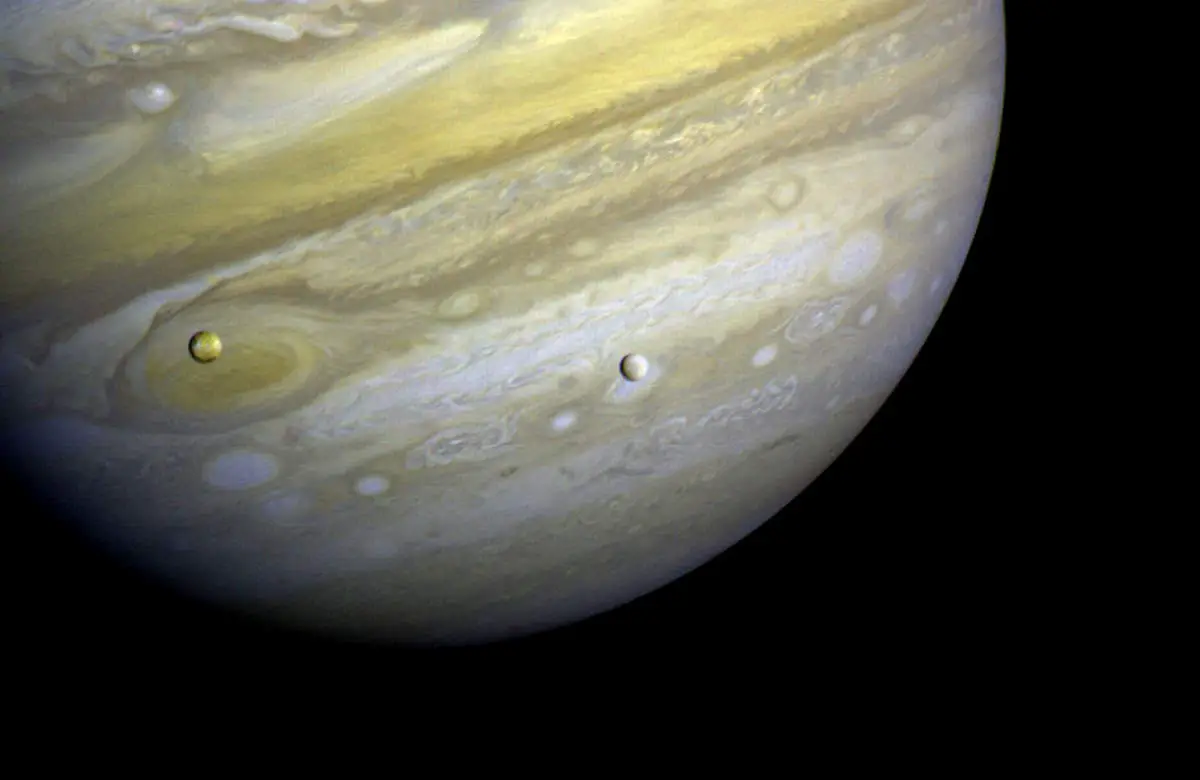On March 5, 1979, NASA’s Voyager 1 spacecraft performed a Jupiter flyby as it flew within 277,400 kilometers (172,368 miles) of the planet’s cloud tops or 348,890 km/216,790 miles from the center of mass.
March 5 story of what happened this day in Science, Technology, Astronomy, and Space Exploration history.
Voyager 1’s Jupiter Flyby
Voyager 1 began photographing Jupiter on January 6, 1979. At this time, the images of the gas giant already exceeded the best taken from Earth.

On March 5th, while still traveling towards Jupiter, Voyager 1 approached Amalthea, one of Jupiter’s small inner moons, and captured the first close-up image of the satellite. The photograph revealed that Amalthea had an oblong shape and a reddish color.
Five hours later, Voyager 1 made its closest approach to Jupiter, flying within 277,400 kilometers (172,368 miles) of the planet’s cloud tops.
During its outbound journey, Voyager 1 flew by and photographed the four largest satellites of Jupiter – Io, Europa, Ganymede, and Callisto – which were discovered by Italian astronomer Galileo in 1610. The images showed that each satellite had a unique appearance, with the most notable discovery being an active volcano on Io.
In addition, Voyager 1 discovered two previously unknown moons, later named Thebe and Metis, orbiting Jupiter. As Voyager 1 looked back at Jupiter, backlit by the Sun, it revealed that the planet was surrounded by a thin ring. The observations of Jupiter were completed on April 13th. Voyager 1 took almost 19,000 pictures and many other scientific measurements during the Jupiter flyby.
Despite centuries of studying Jupiter from Earth, the findings of Voyager 1 and 2 surprised astronomers. These missions revealed the existence of significant physical, geological, and atmospheric processes occurring within the planet, its satellites, and its magnetosphere, which were previously unknown to observers. As a result, scientists have gained a greater understanding of the complex nature of Jupiter and its surrounding environment.
The discovery of active volcanoes on Io, one of Jupiter’s satellites, was a significant surprise and a groundbreaking finding. It marked the first time that active volcanism had been observed on another celestial body within our solar system. The volcanic activity on Io appears to have far-reaching effects on the entire Jovian system, as Io is thought to be the primary source of matter that pervades the Jovian magnetosphere – the region of space that surrounds the planet and is primarily influenced by its strong magnetic field.
The eruption of sulfur, oxygen, and sodium from Io’s volcanoes, as well as their being spewed off the surface by the impact of high-energy particles, were detected at the outer edge of the magnetosphere.
After its successful exploration of the Jovian system, Voyager 1 sailed on toward Saturn.
Video: Voyager 1 Jupiter Flyby Results (June 1979)
“Jupiter is a miniature solar system. We have a large body that is radiating more heat than it receives [from the Sun], and the densities of its satellites vary considerably just like the densities of the planets of the solar system. It’s a sun that didn’t quite make it.”
Sources
- Voyager 1 Jupiter Approach on the NASA Jet Propulsion Laboratory website
- Voyager 1 Explores Jupiter on the NASA website
- Voyager 1 on Wikipedia
- Space Shuttle Endeavour’s Touchdown Meets Columbia’s Salute [An amazing photo from the past] - February 29, 2024
- Moon Landings: All-Time List [1966-2024] - February 23, 2024
- From Orbit to Ordinary: 10 Earthly Applications of Space Technology - January 23, 2024
